TWO WEEKS AGO I was on a safari in Africa. I can't believe I was there and it already feels like a dream.
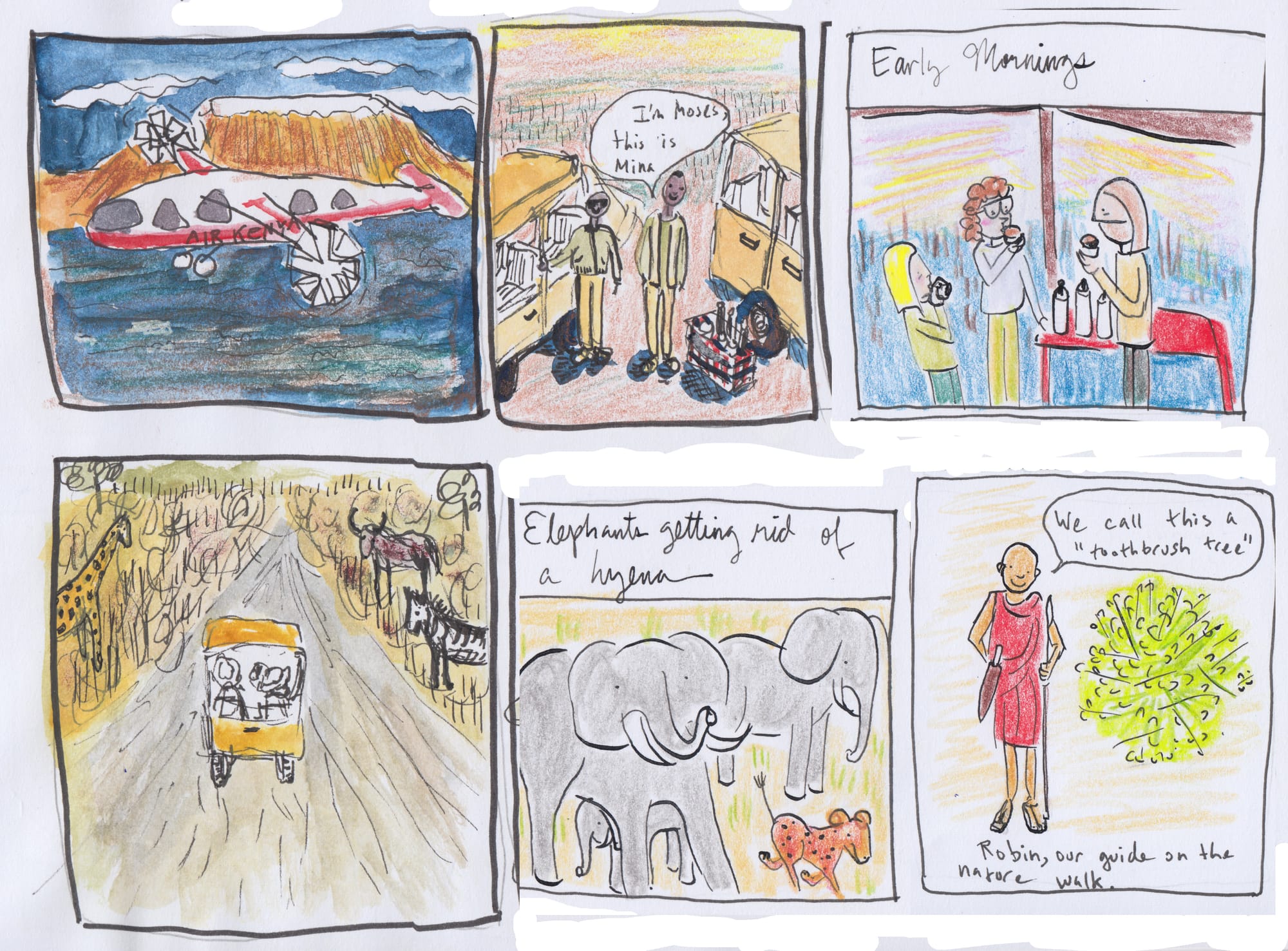
"Give us the details," Molly and Sheila asked me the other day. "Was it like Madagascar, or The Lion King? Give it to us in terms we can understand." Since we went to the Amboseli and Mara conservation lands in Kenya, probably more the latter. Except that the "Circle of Life"? It's more like a slinky than a circle. It's not just life and death, it's life struggling and cooperating and strategizing and manipulating to ensure its survival in a million different subtle ways. I thought I knew a thing or two about nature, having been to zoos and watched BBC documentaries. But it turns out I don't know anything. I felt like Jon Snow. I saw a gazelle scratching its head on some branches, but what I thought was just an animal getting some relief from an itch turned out to be his way of marking territory. (The male gazelle has a scent gland between its horns.) We were there on vacation, but the animals were all business. The elephants march to the watering hole every morning. The hyenas scavenge for leftovers from whatever animal the lions killed the night before. We saw tens of thousands of wildebeest gather to form the biggest herd of animals I have ever seen and then stampede across the Mara river to Tanzania to graze on the high grasses. If they go en masse, the species has a better chance of escaping crocodiles who lie in wait under the water, among other predators. Everything has a purpose. Animal markings make more sense in the wild—a cheetah or leopard's spots are nearly impossible to make out in the tall grasses. Zebra stripes confuse predators. The pink sweat of a hippo is not sweat at all, but a fluid that acts as sunscreen. I took in so much information and retained so little. Fortunately Michaela and her cousin Emily made some beautiful little cards with drawings and facts to help us remember. Here's a sample.
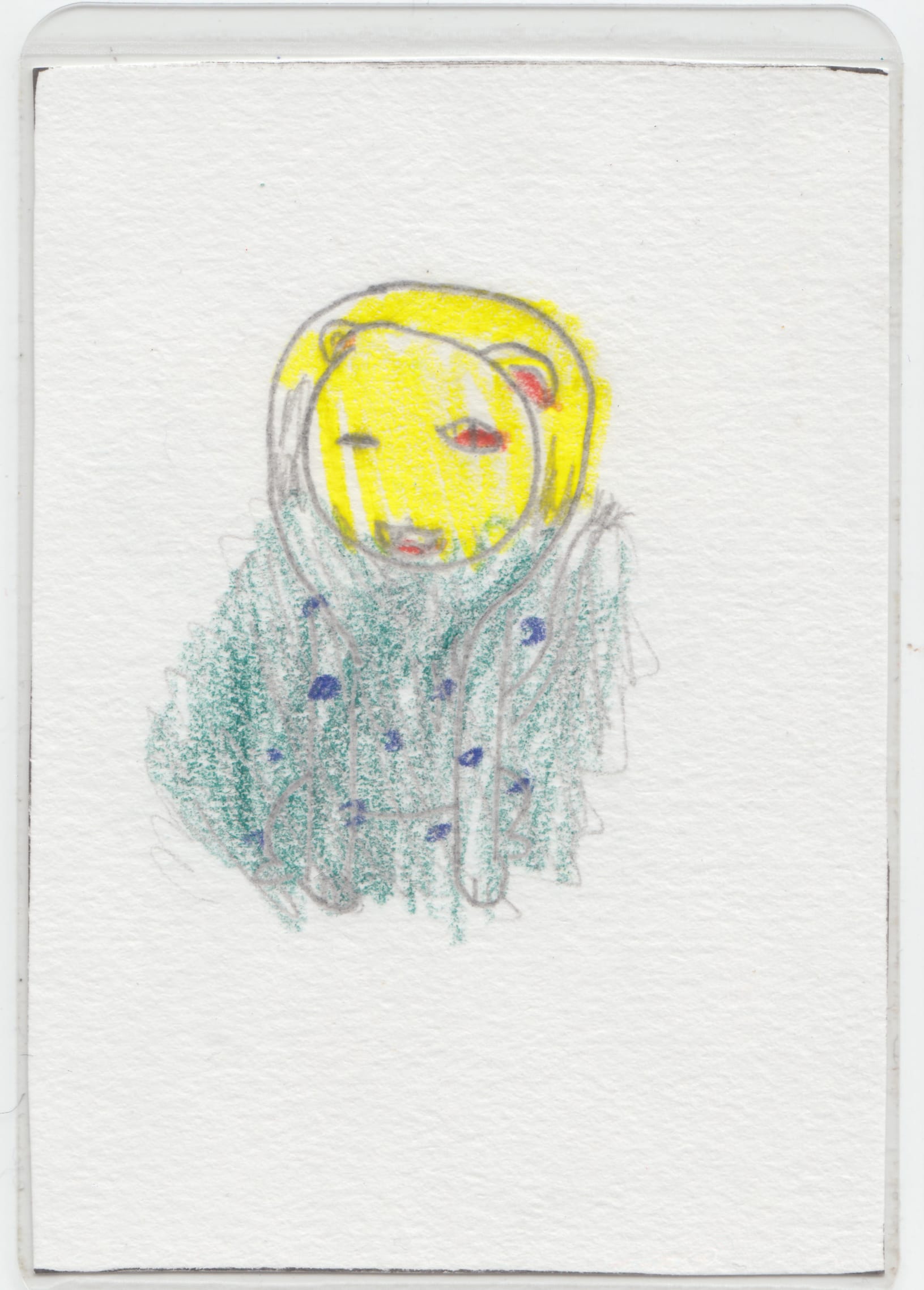

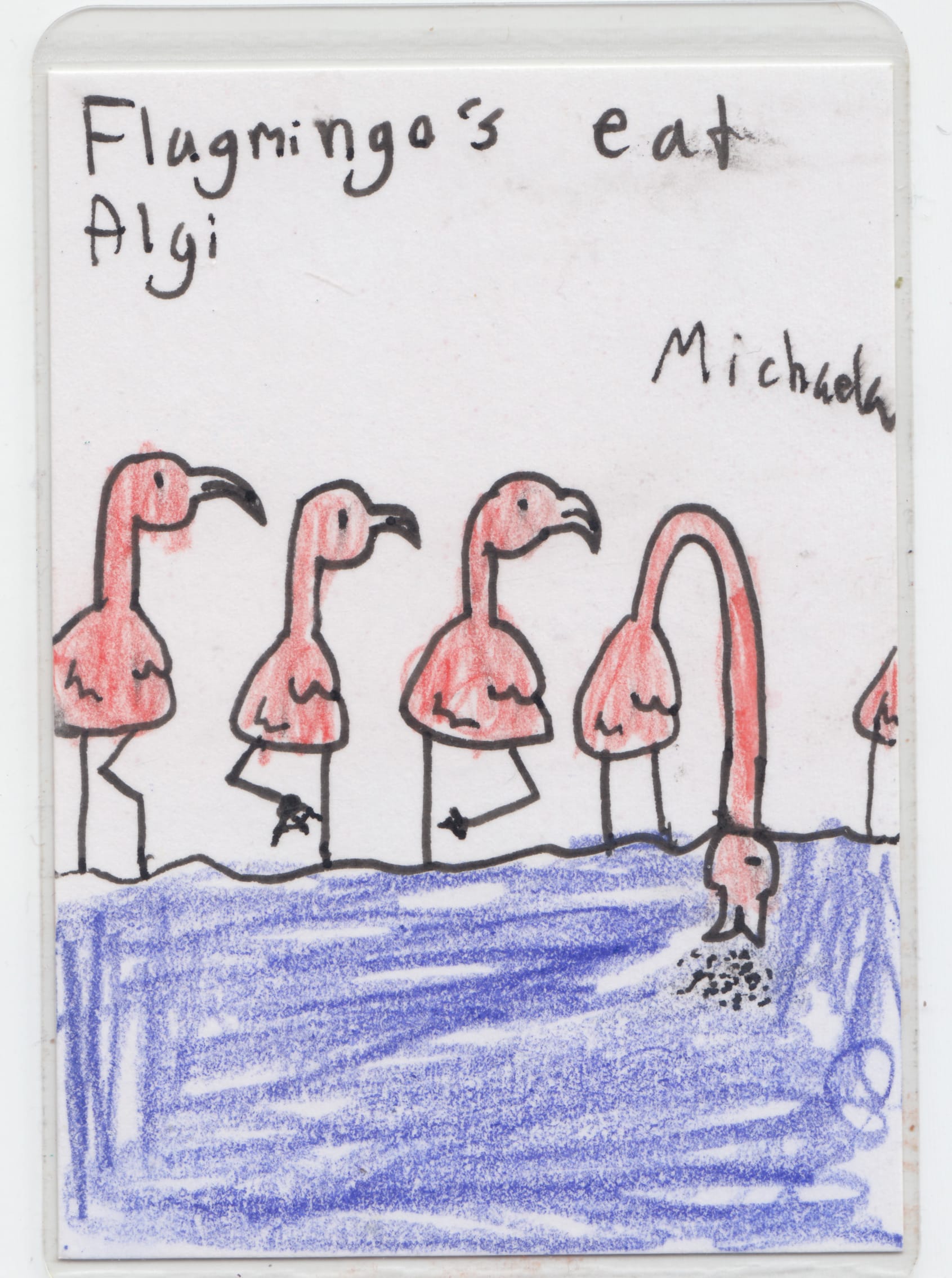
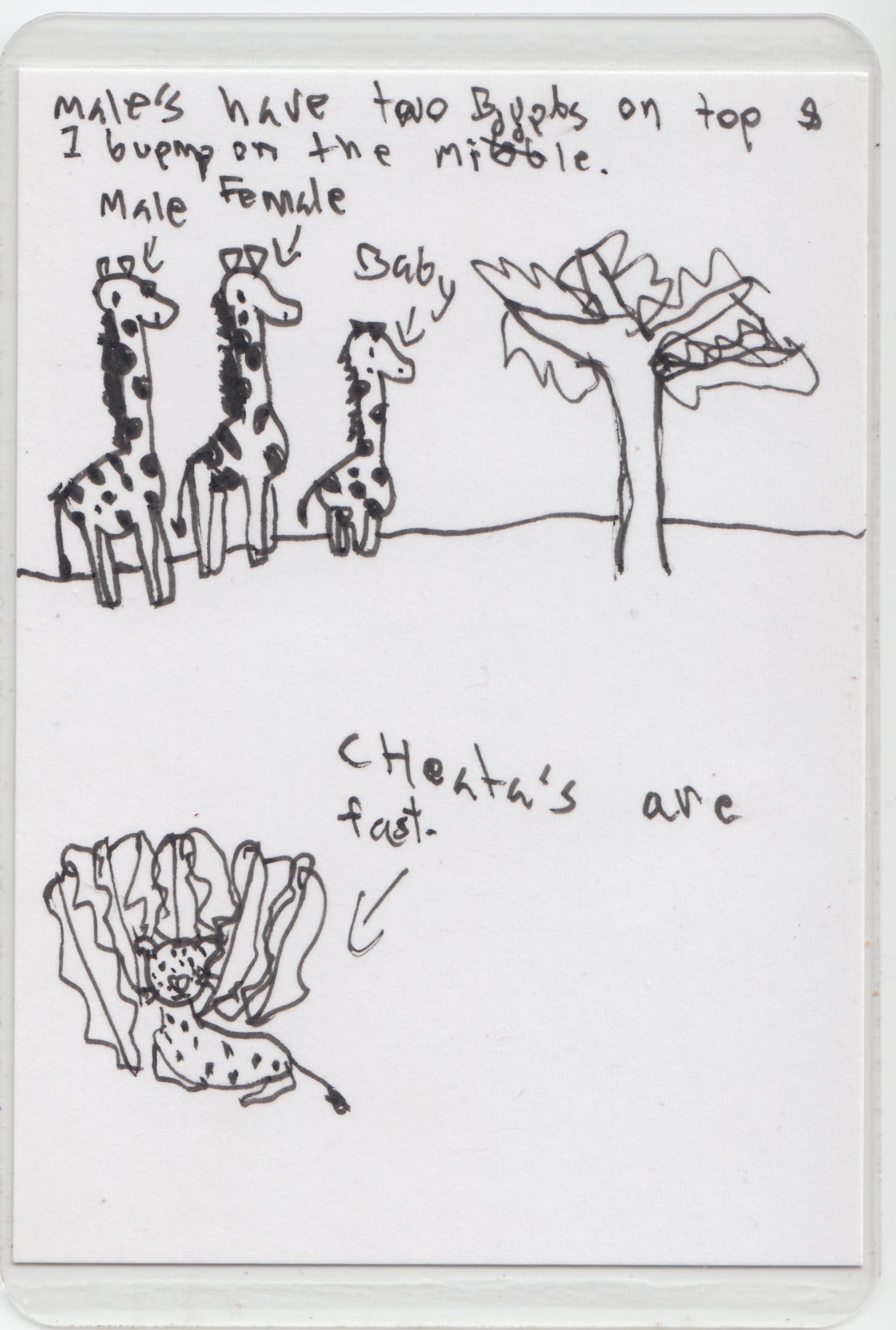
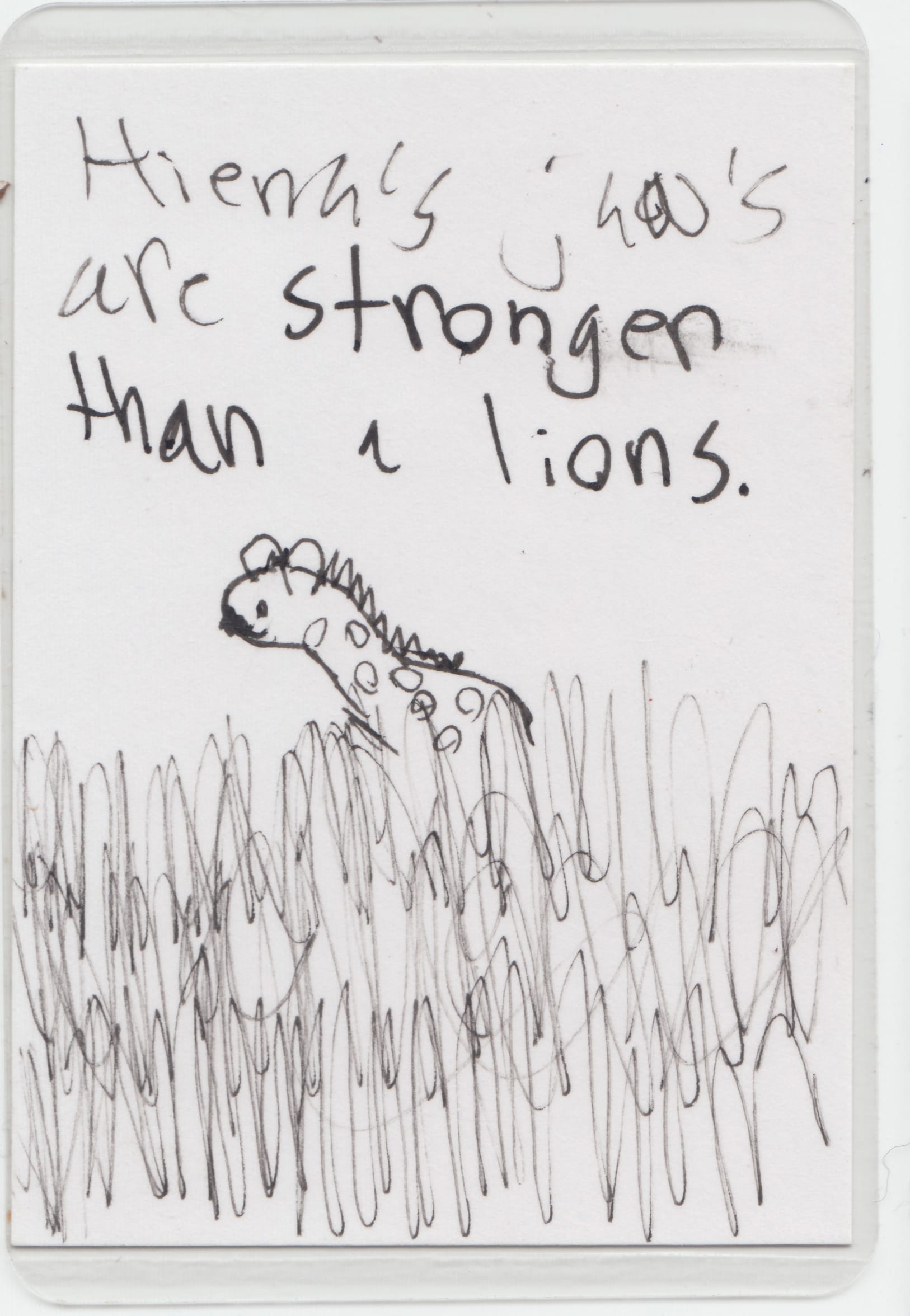
The first drawing on the upper left, by Emily, is of a one-eyed lion sitting in the brush. The lion's name is Chango. He lost his eye while fighting with another lion, but Chango still won the fight. We learned this from Ping, one of our guides in the Mara. When you are spending several hours a day in a Land Rover, you get to know the person behind the wheel pretty well. Ping told us that there was a guy who was studying the hippos, but he died. We asked a question about zebras—have they ever been successfully crossbred with horses? The answer is no, though there has been some success with donkeys—and then Ping told us that there had been a guy who was studying the zebras, but he died, too. Why should the research die with them? It turns out this is a major problem. "Just when we most need new Linnaeuses to catalog life before it disappears, potential contributors are themselves disappearing, not due to a lack of habitat, but its academic equivalent, the lack of funding."
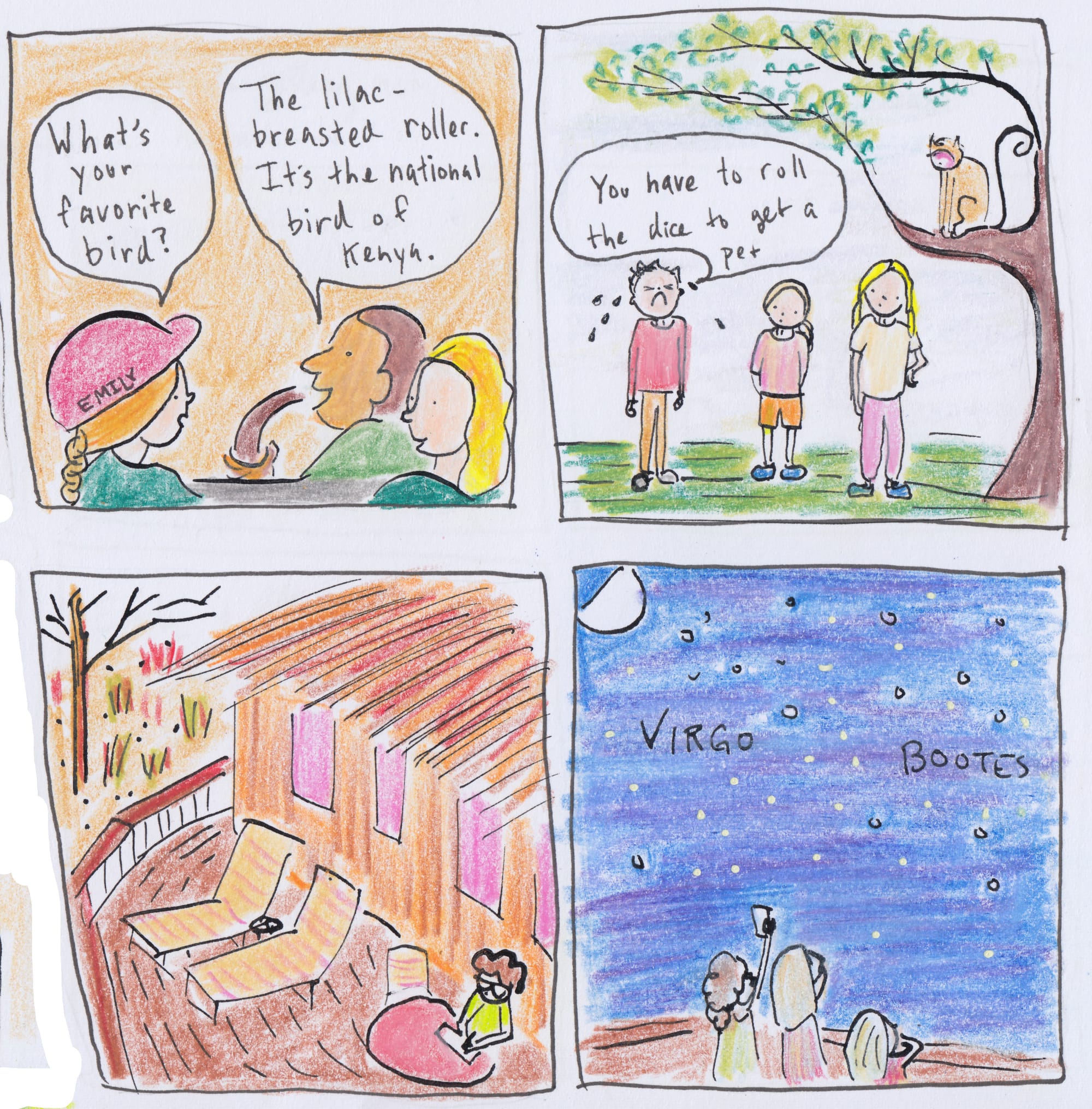
We took thousands of pictures. At times it seemed like the animals were posing for us. They are so used to the cars that they aren't fazed by them at all.
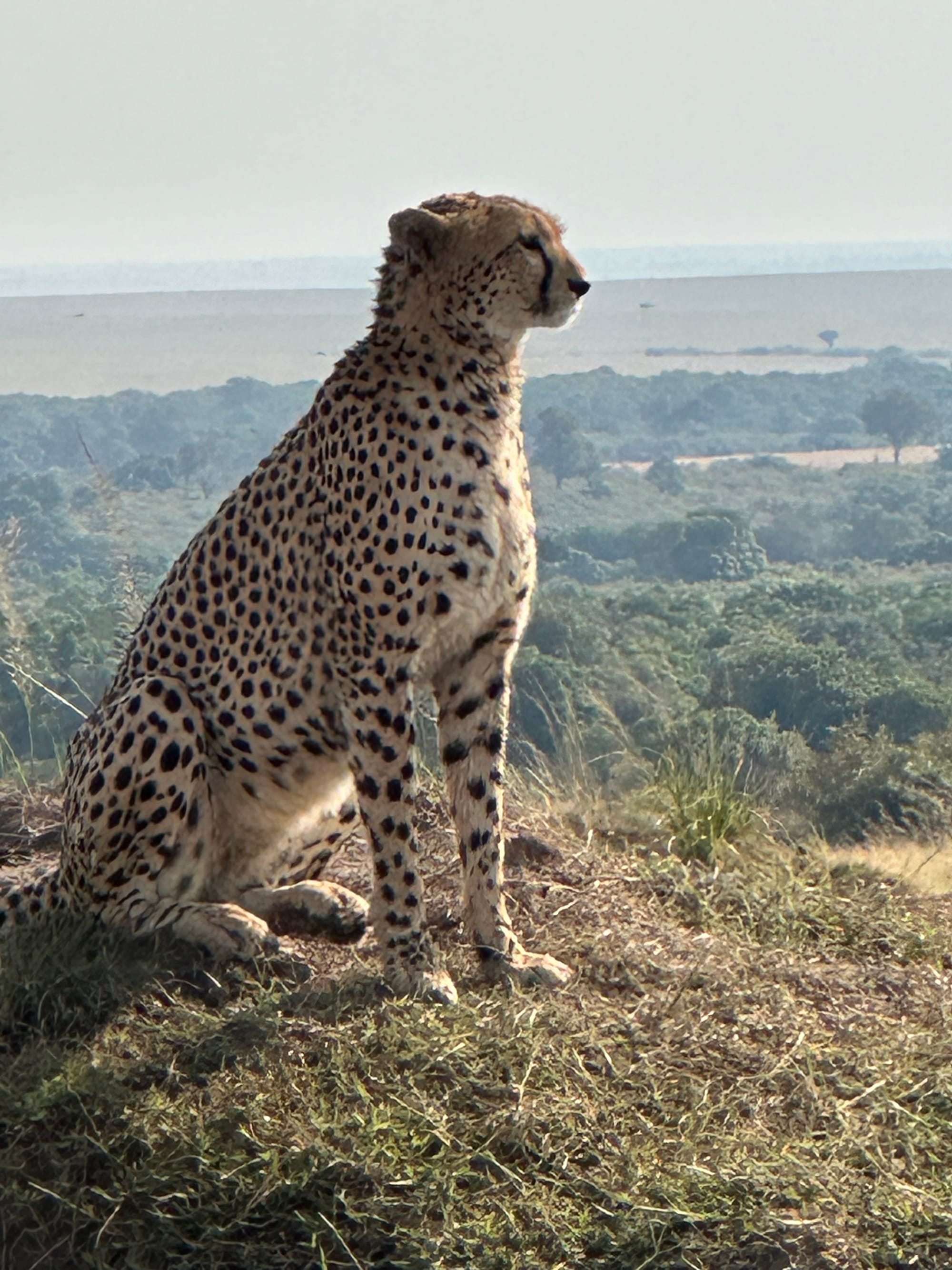
The cars themselves were fascinating. Land Rovers that climbed rocky slopes like they had legs. The shocks on these things get a real workout. Our fitness watches recorded every bump as a step and at the end of the day we had "taken" well over 10,000 steps without even leaving our seat. The cars are customized to accommodate optimal viewing positions and camera angles—even the doors have been lowered so someone could lie on the floor of the car with a heavy telescopic lens.
I started to feel sick as soon as we arrived at Heathrow Airport for our connecting flight. I blamed the overt consumerism of the Western world. Not that that stopped me from spending twenty-five dollars on an expensive face lotion at the duty free shop. On the flight from London to Chicago I threw up. The flight attendants called for medical assistance and a young woman with tattoos on her arms came over to talk to me. She told me that my vagus nerve was overloaded and I just needed to rest. It turned out she was a surgeon. I saw her later on the plane nursing a baby.
When we got back, I kept expecting to see a family of elephants strolling past the basketball court at the neighborhood park. It was just that normal to me at that point.
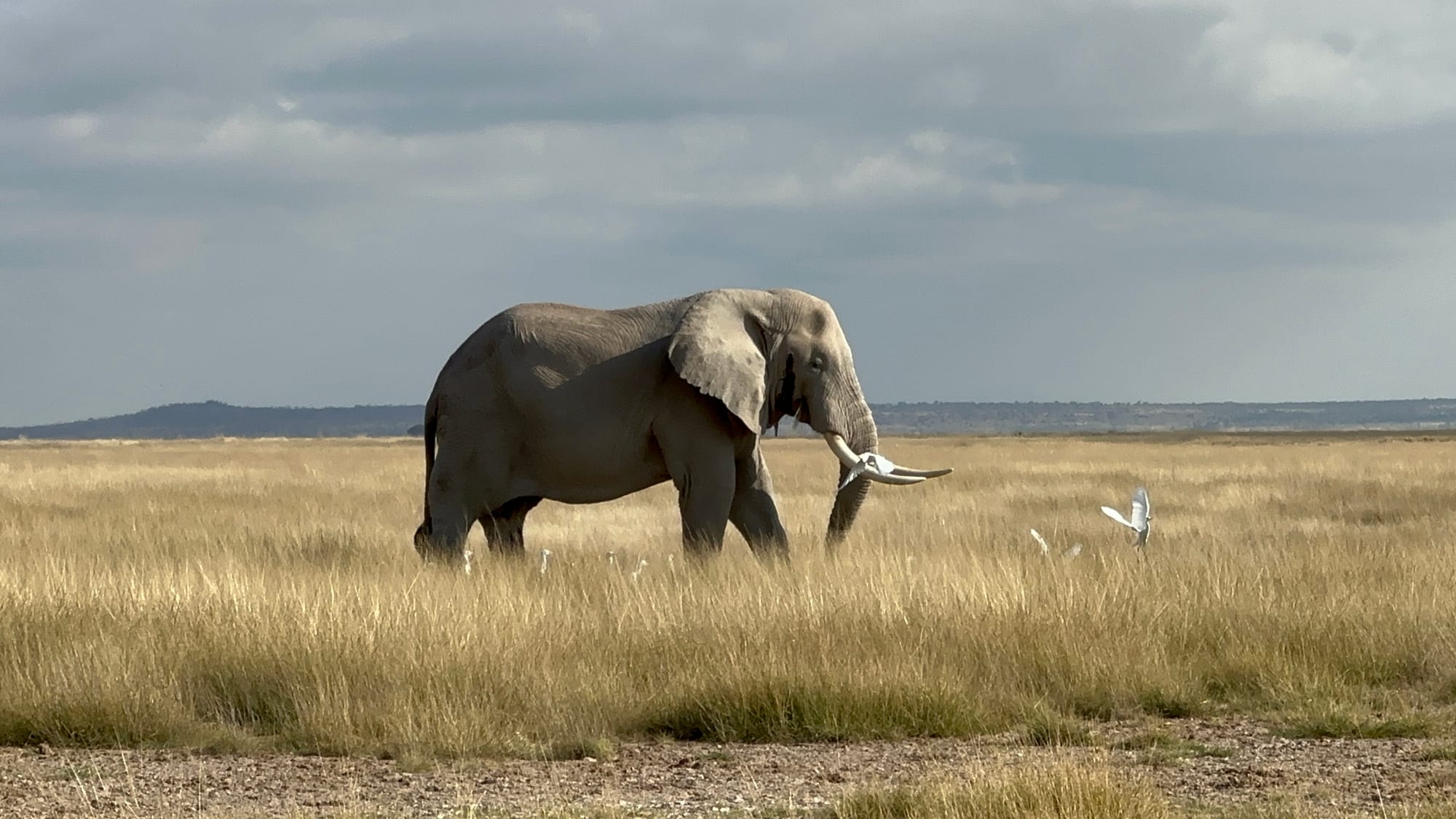
It seems fitting that as I wrote this, WFMT was playing Nigerian composer Taiwo Adegoke's "Sunrise in Africa."
I had hoped to get a much longer email out to you all today, as it's been a few weeks since the last one, but that turned out to be too ambitious. I'll send another next week. In the meantime, happy August. I hope you are enjoying the dog days of summer. Eat lots of tomatoes and drink lots of iced coffees and watch lots of Olympic finals—I know I am.
Take it easy,
Claire
